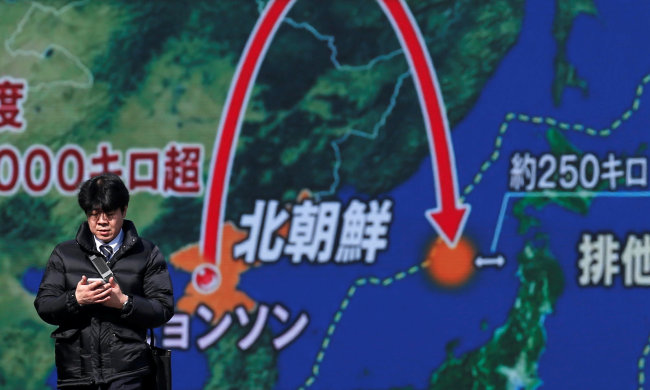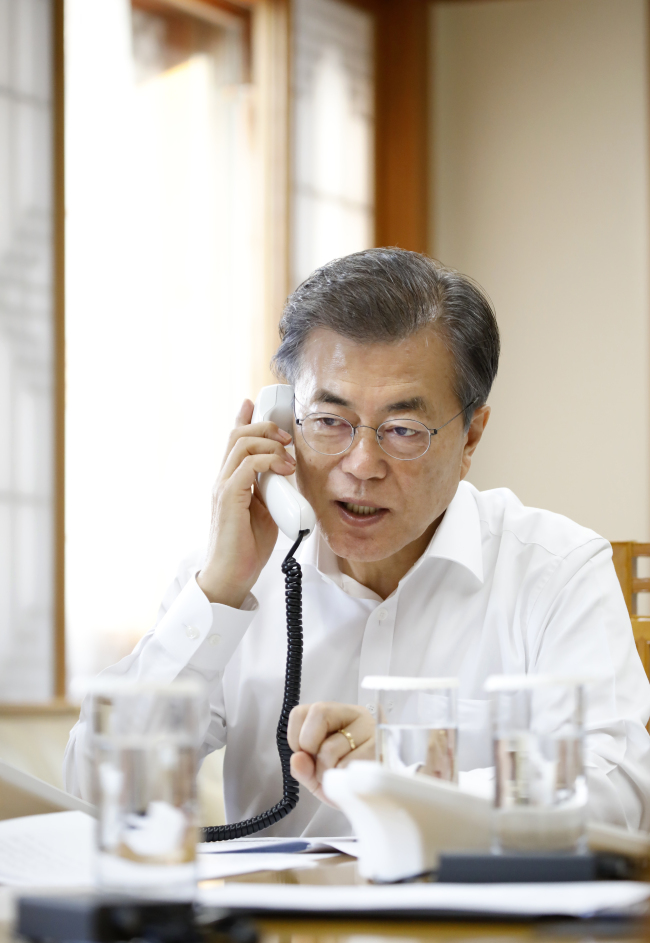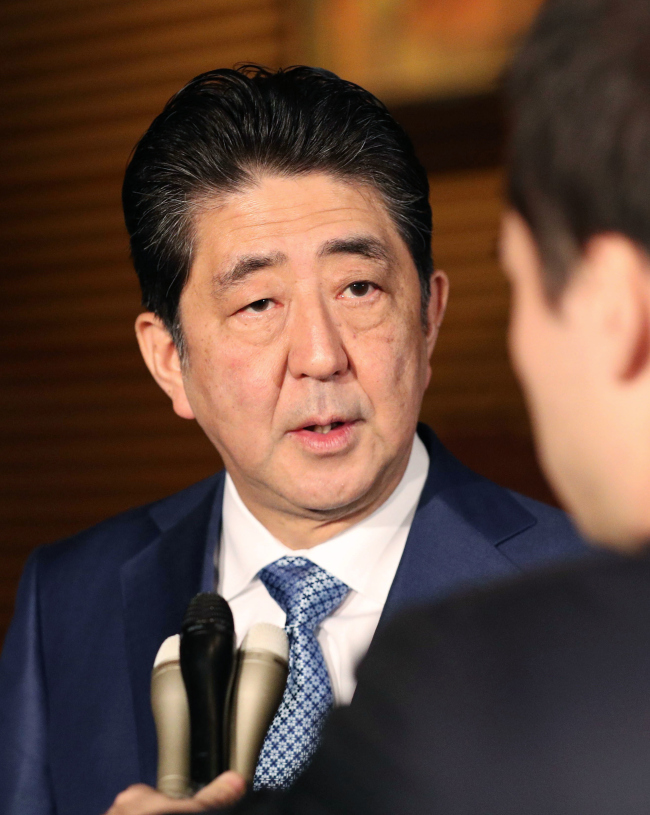North Korea on Wednesday fired a long-range ballistic missile and declared that it has completed its missile and nuclear armament programs.
At about 3:17 a.m. on Wednesday, North Korea fired a long-range missile from a mobile launch platform some 30 kilometers north of Pyongyang.
In an announcement later in the day, North Korea’s state news agency claimed that the missile was a Hwaseong-15 model, “tipped with (a) super-large heavy warhead which is capable of striking the whole mainland of the US.”
The Korean Central News Agency said that the missile was far more advanced than the Hwaseong-14 missile fired in July, and the most powerful to date that completes Pyongyang’s missile development program.
At about 3:17 a.m. on Wednesday, North Korea fired a long-range missile from a mobile launch platform some 30 kilometers north of Pyongyang.
In an announcement later in the day, North Korea’s state news agency claimed that the missile was a Hwaseong-15 model, “tipped with (a) super-large heavy warhead which is capable of striking the whole mainland of the US.”
The Korean Central News Agency said that the missile was far more advanced than the Hwaseong-14 missile fired in July, and the most powerful to date that completes Pyongyang’s missile development program.

According to the KCNA, the missile was fired at the maximum launch angle, reaching an altitude of 4,475 kilometers and covering distance of 950 kilometers. The maximum range of a projectile, launched at a standard angle, is generally estimated to be two to three times longer than the maximum altitude reached in a high-angle launch. This means Washington, which lies about 11,000 kilometers away from Pyongyang, could be within its range.
North Korea claimed after its sixth nuclear test on Sept. 3 that it had secured the technology to produce nuclear warheads that can be fitted onto ballistic missiles.
Soon after the launch, South Korea’s President Moon Jae-in called a National Security Council meeting at 6 a.m., condemning the move, and reiterated the need for Seoul to secure “overwhelming strength” over North Korea.

Saying that Pyongyang’s actions would bring further isolation, he also warned that international pressure will be maintained unless the regime gives up its missile and nuclear programs.
“The situation can deteriorate uncontrollably if North Korea completes its intercontinental ballistic missiles. North Korea misjudging the situation to threaten us with nuclear (weapons) or the US considering preemptive attack must be avoided,” Moon said.
Following the meeting Moon held a telephone conversation with US President Donald Trump, in which the leaders reaffirmed their stance on North Korea.
“The two leaders agreed to take stern and strong measures against North Korea’s provocation from the firm foundation of South Korea-US alliance,” Cheong Wa Dae spokesman Park Soo-hyun said.
Park added that Trump called for a detailed analysis of Wednesday’s missile, and to formulate further additional measures.
The White House, for its part said that the two leaders shared the view that North Korea poses a threat to the entire world, and that Pyongyang was deepening its diplomatic and economic isolation.
Later in the day, Moon held a telephone conversation with Japanese Prime Minister Shinzo Abe, discussing the gravity of the situation.

The South Korean military also responded quickly, conducting precision missile strike exercises within minutes of North Korea’s latest provocation.
Seoul’s Joint Chiefs of Staff on Wednesday said that Air Force, Army and Navy units engaged in a missile exercise, each firing one precision strike missiles at a target in the East Sea from 3:23 a.m. to 3:44 a.m.
“The exercise demonstrates that our military is watching North Korea’s military movements around the clock, and our will and ability to carry out precision strikes against core facilities, and the point of origin of a provocation at any time,” a JCS spokesman said, adding that the three missile hit the target simultaneously.
According to a high-level official, Moon had authorized the JCS chairman to order such a drill on Monday, in light of intelligence indicating an imminent provocation by Pyongyang.
South Korean authorities suspect that the launch is aimed at consolidating Kim Jong-un’s regime against internal unrest and protest against increasing international pressure. Pyongyang’s latest defiance of the international community is also thought to be aimed at pushing the US into engaging with the regime in talks.
As for North Korea, the rogue state continues to justify its actions as a means to defend itself against US aggression, while claiming completion of advanced weapons programs.
“After watching the successful launch of the new type ICBM Hwaseong-15, Kim Jong-un declared with pride that now we have finally realized the great historic cause of completing the state nuclear force,” a KCNA report said.
Saying that the development was a “priceless victory,” the report went on to claim that the purpose of Pyongyang’s nuclear and missile programs is to ensure peace, and to defend against the US’ “nuclear blackmail policy and nuclear threat.”
Describing North Korea as a “peace-loving state” and a nuclear power, the news agency claimed that Pyongyang is working to defend the “peace and stability of the world.”
By Choi He-suk (cheesuk@heraldcorp.com)






![[Weekender] How DDP emerged as an icon of Seoul](http://res.heraldm.com/phpwas/restmb_idxmake.php?idx=644&simg=/content/image/2024/04/25/20240425050915_0.jpg&u=)



![[KH Explains] No more 'Michael' at Kakao Games](http://res.heraldm.com/phpwas/restmb_idxmake.php?idx=644&simg=/content/image/2024/04/28/20240428050183_0.jpg&u=20240428180321)







![[Herald Interview] Mistakes turn into blessings in street performance, director says](http://res.heraldm.com/phpwas/restmb_idxmake.php?idx=652&simg=/content/image/2024/04/28/20240428050150_0.jpg&u=20240428174656)
